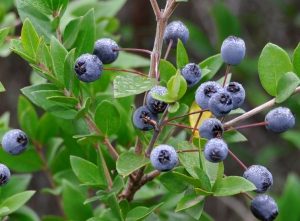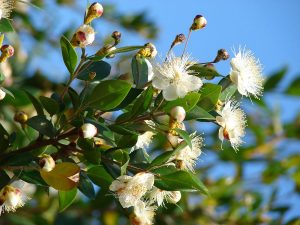Myrtle – Myrtus Communis Tarentina


The Myrtus communis better known as Myrtleis a type of shrub, which is part of the myrtaceae family. Its height is between 100 and 150cm and can be kept where there is not a lot of space. For it to reach its maximum development it needs about 10-12 years. The leaves of this species are persistent. The cultivation can take place in informal gardens, gravel gardens,Mediterranean gardens,pots or containers, architettonic, terraces and courtyards, rock gardens, lawns or in fields, flower gardens, country gardens, coastal gardens and sub tropical gardens.
TERRAIN
The Common Myrtle grows in almost any soil conditions that are permeable in fact it is necessary to guarantee good drainage given that the myrtle is not good with stagnant water which could compromise its health. The soil shouldn’t be to rich in calcium and if you intend to cultivate it in pots you should acquire an adequate soil from one of the numerous garden centres. The plant needs full sun for excellent development, even if it is adapt to the shade of the woods. It doesn’t enjoy arid or hot climates and should be protected from rigid temperatures. In this case it should be positioned in a shielded area and when the temperature lowers, if not planted in a pot but in the ground,
You should use the protection which allows the plant to resist the rigid climate.
FLORA AND FRUIT
The common myrtles’ flowers are white with five petals and stamen which bud in the pits of the pits of the superior leaves. These branches are full of perfumed flowers in late Spring and Summer. It’s possible that the myrtle produces a second bloom late Summer until October and if the Atumuns are warm. The common myrtle has berries which are more or less globular, and are usually a colour between black and light blue, less frequently they can be a brownish red. This fruit develops during Winter in November to January and the remain on the plant for a long time. They have a meaty consistency which birds love.
USE AND HEALTH PROPERTIES
This plant can offer us even properties which can be used as a natural anti inflamatory remedy for the respiratory system, which you can buy at the herbalist’s. In the old days these remedies were applied to combat ulcers, dermatitis, urinary infection. You can use all the parts of the plant: leaves, flowers and berries. The myrtle flowers are collected in the month of August, They are of a dark green colour and can be used in the kitchen as a condiment with fish and meat dishes. They can also be dried and then used in herbal teas.
POTTING PRUNING AND CULTIVATION
The best way to grow this myrtle plant is let it grow freely as a bush. In this way In this way the bush will naturally for hedges and don’t require intervention or potting. If instead you want to grow it as a high trunk, like a tree, the plant will need intervention by potting and a decidedly more complex maintenance. A system of supports made of string or stakes are essential. Apart from that you will need to modify the natural bushlike posture of the plant. To be sure of the plant blooming, pot the old and dry branches, and those which are young and vivacious will host the Spring flowers.
